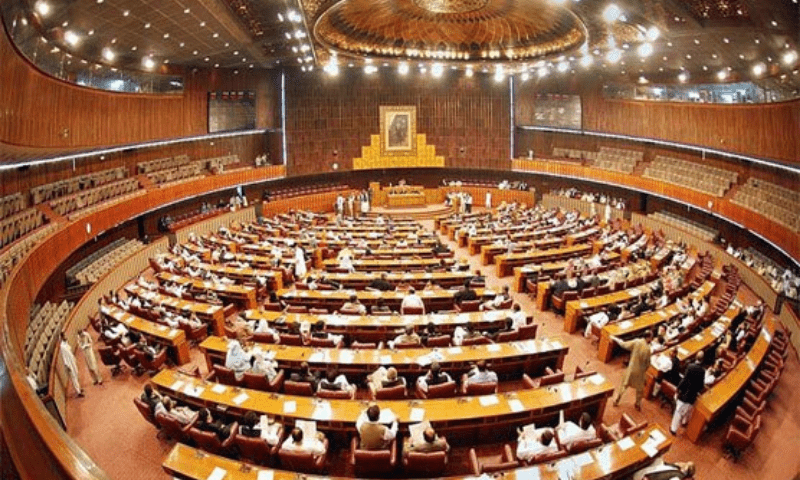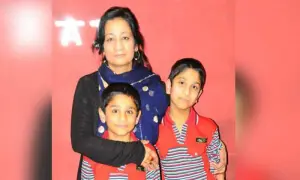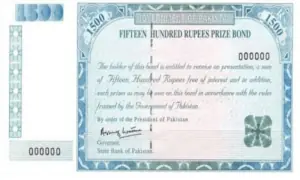FAFEN report: Women parliamentarians outshine men in legislation
Women lawmakers outperformed their male counterparts in parliamentary contributions, according to the latest report by the Free and Fair Election Network (FAFEN) on their performance for 2024-25.
Asifa Bhutto had a 42% attendance in the National Assembly, where she submitted two questions and one call-attention notice.
FAFEN’s report highlights that women played a significant role in 50% of the presented agenda, demonstrating exceptional efforts despite challenges.
Their contributions to legislation and policymaking were commendable.
Also, read this
Half of required information published on websites by Punjab institutions: FAFEN
FAFEN report: Pakistan’s electoral representation remains stagnant from 2002 to 2024
FAFEN proposes audit of each constituency before notification
The report was published in connection with International Women’s Day and underlines that women outperformed men in submitting agenda items.
The data reveals that, on average, each female parliamentarian submitted 17 agenda items compared to only three submitted by male lawmakers.
Despite making up just 17% of parliament, women parliamentarians contributed 49% of the overall agenda. Female National Assembly members presented 55% of the agenda items, while female senators accounted for 31%.
Comparing past performances, the report states that in 2022-23, women lawmakers contributed 67% of the agenda in the National Assembly.
Overall, 83% of agenda items presented by both men and women were discussed, with 67% of women’s and 66% of men’s agenda items being considered.
In the Senate, 80% of the total agenda items submitted by both male and female members were discussed.
Separately, 77% of women’s and men’s agenda items received deliberation. Women lawmakers had a 75% attendance rate in the National Assembly, higher than the 63% recorded for male lawmakers.
In the Senate, female senators had a 67% attendance rate, while their male counterparts had a 64% attendance rate.
FAFEN’s findings indicate that female MNAs submitted 68% of call-attention notices, while female senators submitted 26%.
Women parliamentarians also presented 42% of private bills in the National Assembly and 47% in the Senate.
Additionally, female MNAs introduced 45% of motions for discussions, while female senators introduced 32%. Women in the National Assembly put forward 45% of resolutions, whereas female senators presented 75% of them.
Women MNAs raised 28% of parliamentary questions.
The report further states that one percent of female National Assembly members participated in debates, 25% submitted agenda items, and 65% actively engaged in both agenda-setting and discussions.
However, PTI Senator Sania Nishtar did not attend any session.
Meanwhile, 54 male members and five female members in the National Assembly did not contribute to parliamentary business.
In the Senate, three male members and one female member remained inactive.
Among notable contributors, Senator Samina Mumtaz submitted 26 questions, three call-attention notices, three discussion motions, 18 bills, and four resolutions.
PML-N Senator Bushra Anjum Butt had a 62% attendance record but did not submit any agenda items. Senator Sherry Rehman attended 80% of sessions, submitting two call-attention notices, one discussion motion, and seven resolutions.
PTI Senator Zarqa Suharwardy submitted 33 questions, one call-attention notice, three discussion motions, one bill, and two resolutions.
PTI’s Fauzia Arshad put forward 17 questions, two call-attention notices, five bills, and four resolutions.
PPP Senator Hassana Bano had a 90% attendance rate and submitted two resolutions, while Khalida Ateeq and Naseema Ehsan each presented two resolutions.
PML-N’s Anusha Rehman submitted nine questions, one discussion motion, two bills, and one resolution. Palwasha Khan contributed eight questions, one call-attention notice, four bills, and four resolutions.
In the National Assembly, Nafisa Shah attended 82% of sessions and submitted 33 questions, three call-attention notices, two bills, and one resolution.
Asifa Bhutto had a 42% attendance rate and submitted two questions and one call-attention notice.
Other key contributors included Shandana Gulzar, who submitted one question, and Wajiha Qamar, who had a 91% attendance rate and presented seven questions.
MNA Nuzhat Sadiq attended 96% of sessions, submitting 13 questions, 11 call-attention notices, one bill, and two resolutions.
Asia Naz Tanoli submitted 43 questions, 15 call-attention notices, two bills, and one resolution.
On the other hand, Zainab Baloch, Seema Jamali, Musarrat Asif, Amber Majeed, and Tehmina Daultana did not submit any parliamentary business.
Sharmila Farooqi stood out by submitting 80 questions, six call-attention notices, eight discussion motions, nine bills, and six resolutions.
Hina Rabbani Khar had a 40% attendance rate and submitted two questions.
Sahar Kamran attended 92% of the sessions, raising 35 questions, three call-attention notices, one discussion motion, two bills, and four resolutions.
MNA Alia Kamran was among the most active members, submitting 89 questions, 13 call-attention notices, two discussion motions, two bills, and four resolutions.
For the latest news, follow us on Twitter @Aaj_Urdu. We are also on Facebook, Instagram and YouTube.















Comments are closed on this story.